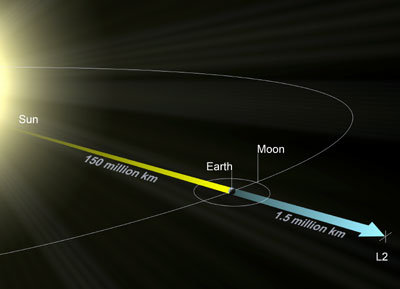
Gaia, the European Space Agency's long-awaited space observatory, is set to launch on Thursday from the agency's spaceport in Kourou, French Guiana.
The €700 million mission is designed to pin down the three-dimensional positions and velocities of a billion Milky Way stars, which amounts to roughly one out of every 100 stars in the galaxy.
Gaia is only the second space telescope dedicated to astrometry, the measurement of stellar distances. The first, Hipparcos, launched in 1989. It carried pre-CCD technology and was capable of measuring just one star at a time using a photomultiplier tube. Gaia, in contrast, has a bank of 106 CCDs. Together, they have almost 1 billion pixels and provide half a square meter of sensor area, making it the largest focal plane yet sent to space.
Like its predecessor, Gaia will gauge distance through parallax, the subtle change in position that occurs when you view an object from two different angles. Think of a pencil held in front of your nose: it shifts position against more distant background objects if you look at it first with one eye and then the other. The farther you hold it from your nose, the smaller this shift.
As I explain in my January article previewing the mission, because parallaxes are very tiny at interstellar distances, Gaia's "eyes" must be very far apart. To get a big enough change in perspective, the spacecraft will observe the same patch of sky first when it's on one side of the sun and then again, half a year later, when it's on the opposite side. After the data's crunched, Gaia's precision will comparable to standing in your backyard and seeing an insect on the surface of the moon.
As an optical observatory, Gaia will have a tough time seeing stars in dustier parts of the galaxy. But a number of the astronomers I spoke with told me they expected Gaia could still have a big impact on the calibration of cosmic distances and the study of Milky Way history and structure, including the distribution of dark matter. Barry F. Madore of the Carnegie Observatories in Pasadena, Calif., who is not affiliated with the mission, was particularly excited about the Gaia's prospects. "It's going to be phenomenal," he told me. "It will change everything."

Illustration: ESA
ESA has put together an animation showing Gaia's path from launch to orbit, including the deployment of the spacecraft's 10-meter-wide sun shield; its trip to the second Lagrange, or L2, point, where it will orbit the sun in tandem with Earth and avoid flying in and out of Earth's shadow; and the view from its two telescopes.
Launch is set for 9:12:19 GMT (4:12:19 EST). The event will be broadcast live on this site, and ESA plans to post updates on this blog.





